

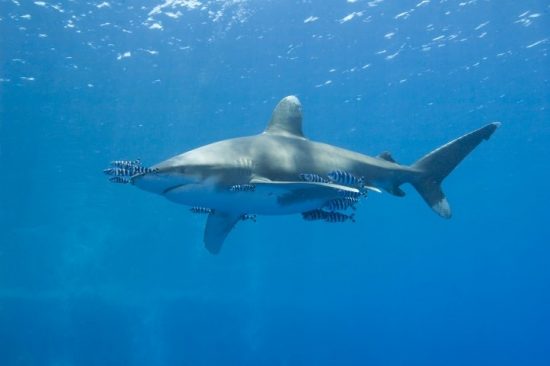
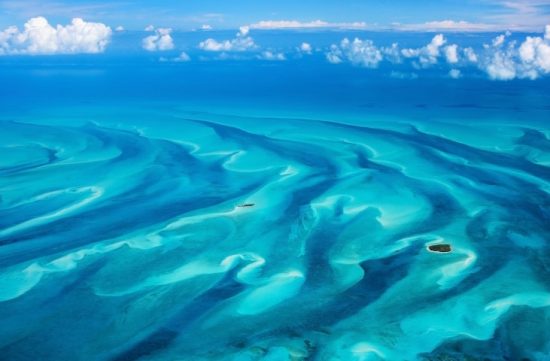
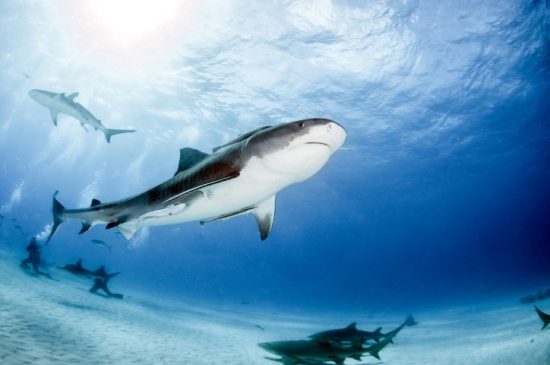
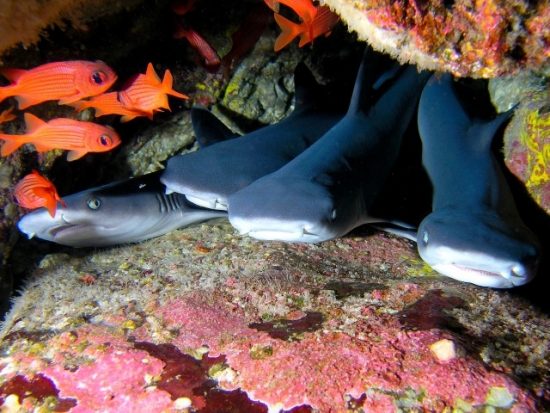
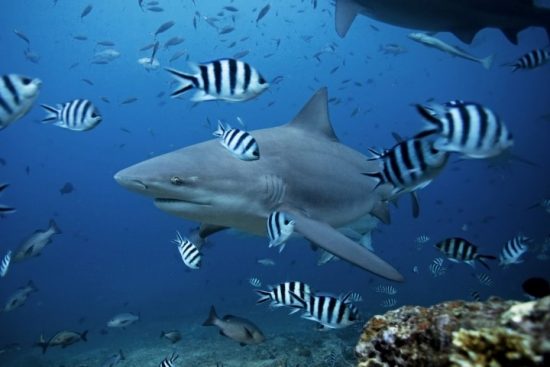
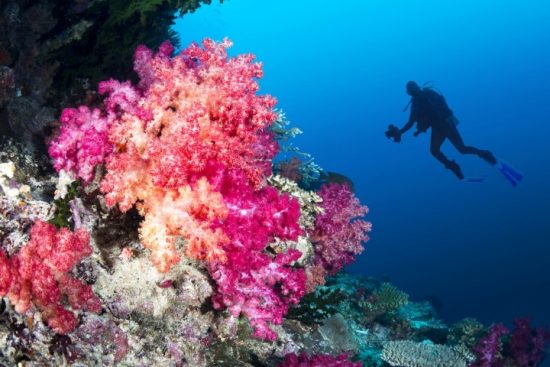
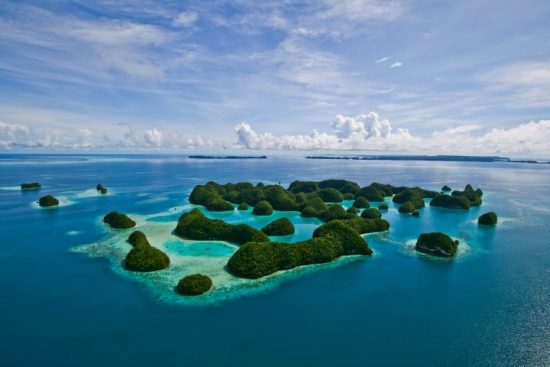
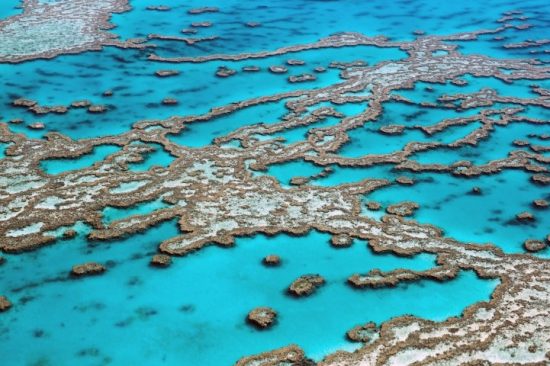
Bull sharks might have a bad reputation as being aggressive but diving with these sharks is a truly magical experience. Bulky and broad-nosed, they are easy to recognise as they pass divers with confidence and ease.
For a shark diving experience you’ll never forget, try these top dive destinations and go in search of bull sharks.
Tiger Beach, the Bahamas
The Bahamas is one of the best places in the world to go shark diving, with numerous species of sharks and easily-accessible dive sites for all experience levels.
A world-class dive destination and shark sanctuary, the sunny Bahamas hosts an array of sharks including bull, tiger, great hammerhead, lemon, Caribbean reef, oceanic whitetip and blacktip reef sharks.
All of which attract plenty of divers to the area’s three main shark diving hotspots: Tiger Beach, Bimini Island and Cat Island.
For bull shark encounters, go diving at Tiger Beach. Bull sharks are most commonly seen there during February and March and the diving is relatively easy.
Tiger Beach shark dives are conducted in shallow water, where divers kneel on the sandy bottom and watch numerous tiger, bull, lemon and Caribbean reef sharks glide by effortlessly.
To see great hammerheads, Bimini Island is the place to go whilst Cat Island offers encounters with oceanic whitetip sharks.
The Bahamas Master offers combined hammerhead and tiger shark expeditions each year.
Bat Islands, Costa Rica
Another premier shark diving destination, Costa Rica is best-known for its schooling hammerheads at Cocos Island, as well as whale sharks, manta rays and plenty of whitetip reef sharks sleeping under rocky ledges.
Go liveaboard diving at the Bat Islands and you’ll enjoy an entirely different experience whilst cruising off Costa Rica’s Pacific coast.
This UNESCO World Heritage site offers diverse landscapes with high species diversity and the chance to dive with resident bull sharks at the aptly-named Big Scare.
Dive the Big Scare and you’ll meet numerous bull sharks, plus have the chance to see whales, dolphins, manta rays and a huge variety of reef fish. The corals are healthy and night dives bring the reefs to life in a flurry of hunting activity.
It is best to visit the Bat Islands as an experienced diver as the dive sites are deep and have strong currents with surge.
The Okeanos Aggressor and Okeanos Aggressor II both offer Guanacaste and Bat Islands safaris from June to August.
Fiji
As the soft coral capital of the world, Fiji offers vibrant reefs cloaked in technicolour soft corals. There is simply nowhere quite like Fiji for colourful diving and sharks.
If you can tear your eyes away from the corals, there are plenty of sharks to see whilst diving Fiji.
Commonly seen species include whitetip, grey and blacktip reef sharks, and you can also see silky, zebra, lemon, hammerhead and whale sharks.
Gau Island, Nigali Passage and Makongi Island have some of the best shark diving opportunities and are best-accessed by Fiji liveaboard diving.
To see numerous bull sharks up close and personal, make sure you experience the famed bull shark feed dives at Beqa Lagoon, Pacific Harbour on Viti Levu.
Bull shark encounters are possible all year and Fiji diving has something for all experience levels to enjoy.
Palau, Micronesia
Best-known for its idyllic scenery, WWII wrecks and diverse marine life, Palau in Micronesia is high on the wish list for many divers.
Wherever you dive at Palau you’ll likely encounter some sharks; be they grey reefs, whitetips, nurse or zebra sharks.
For bull sharks, try diving Peleliu Wall and Cut. This iconic dive spot not only offers reef diving with plenty of grey reef and whitetip sharks but also the chance of seeing bull, hammerhead and tiger sharks.
You might even see orcas, blue marlin or sperm whales whilst you dive there, so keep your eyes on the blue.
Diving Peleliu during March will give you the best chance of seeing bull sharks. The diving is best-suited to experienced divers due to the strong currents at Peleliu.
S.S. Yongala, Australia
The S. S. Yongala is famous on the Australian dive scene and known as one of the premier wrecks in this diverse country.
Nestled in the Great Barrier Reef off Townsville, the Yongala is a huge 109 meters long and lies at 28 meters depth.
Thanks to being well-protected by historic shipwreck legislation, the wreck is in great condition and is a flourishing artificial reef.
Dive there and you can see a staggering amount of life, including large shoals of fish, bull sharks and bull rays.
The Spoilsport liveaboard offers occasional Yongala dive safaris to this unique destination.
By Kathryn Curzon - a diver and writer at LiveAboard.com
 LiveAboard
LiveAboard 11th October 2019
11th October 2019